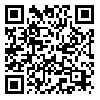Volume 4, Issue 3 And 4 (Autumn 2018 and Winter 2019 2019)
2019, 4(3 And 4): 51-62 |
Back to browse issues page
Download citation:
BibTeX | RIS | EndNote | Medlars | ProCite | Reference Manager | RefWorks
Send citation to:



BibTeX | RIS | EndNote | Medlars | ProCite | Reference Manager | RefWorks
Send citation to:
Adapted Magic
A Critique of the Adaptation of Magical Realism in Iran
. Quarterly book review literature & Art 2019; 4 (3 and 4) :51-62
URL: http://litbr.faslnameh.org/article-1-595-en.html
URL: http://litbr.faslnameh.org/article-1-595-en.html
Abstract: (2248 Views)
Magical realism was one of the trends that quickly became known, translated, and imitated in Iran's fiction. The first time the door to magic realism was opened to Iranian literature was when Ahmad Mir-alai, translated the short stories of Borges. After him, Bahman Farzaneh, with a translation of One Hundred Years of Solitude, introduced the Iranian community to magical realism. This trend used elements that were similar to those of the Old Iranian culture and literature, and Iranian contemporary fiction writers had produced works close to or similar to these works based on their own common tastes long before the prevalence of this trend in the world. Therefore, the message of Latin American authors was not so new and out of reach to Iranian writers. The widespread and global acceptance of this trend and the existence of similar elements in Iranian rural culture, which was going through a transitions from tradition to modernity, created a fascination among Iranian writers if the sixties and seventies. Most of the active writers of this period tried to experiment with the genre. Moniroo Ravanipour, Shams Langroudi, Reza Barahani, Shahrnoush Parsipour and others were among the renowned authors that produced works in this genre. Some of these writers remained at the level of superficial imitation, and found accessible elements such as belief in superstitions and fairy tales the basis of works that are not very popular today. Others went deeper and created inner realms and native worlds. In general, Iranians became acquainted with magical realism through the translation of fictional works and stories. At the beginning, no one thought of the translating the theory and the underlying thought frame for the idea of magic realism, therefore the understanding and, consequently the imitation remained superficial and of all the aspects and dimensions of this genre only a one or two dimensions were recognized and pursued. Translation of theories and intellectual foundations happened long after the translation of novels and short stories. In the seventies and later in the 80s and 90s (Persian Calendar), there was initially one or two papers published on this topic which followed by several studies in this field. Undergraduate and postgraduate students wrote dissertations on the subject, some of which facing pitfalls due to a lack of understanding of the theoretical foundations. The Adaptation of Magic Realism in Iran, written by Mohammad and Mohsen Hanif, is one of the late studies that was long due and should have been done twenty years ago. Despite extensive research and the use of new and rich sources of material about magical realism, this book shows weak points such as disunity, misunderstanding in recognition of mistakes, and the inaccurate categorization of some of some texts as magical realist texts.
Keywords: Fantasy, Latin American Fiction, Magical Realism, Contemporary Iranian Fiction, Gabriel Garcia Marquez, Borges
Type of Study: Research |
Subject:
Special
Received: 2019/03/17 | Accepted: 2019/03/17 | Published: 2019/03/17
Received: 2019/03/17 | Accepted: 2019/03/17 | Published: 2019/03/17
| Rights and permissions | |
 |
This work is licensed under a Creative Commons Attribution-NonCommercial 4.0 International License. |





